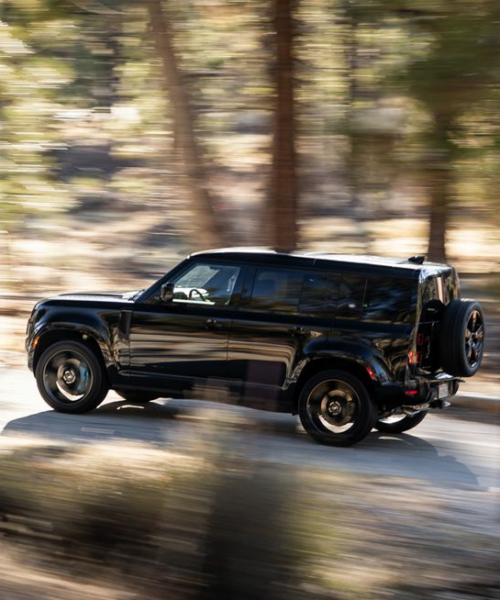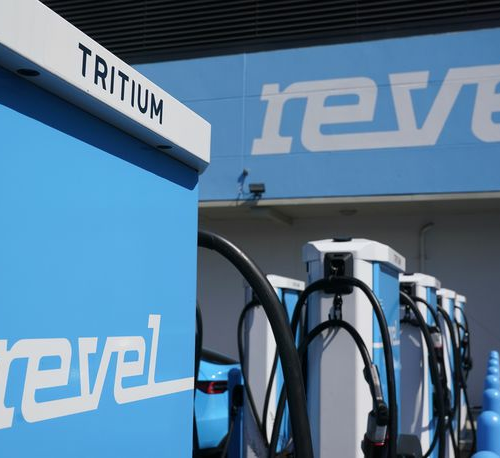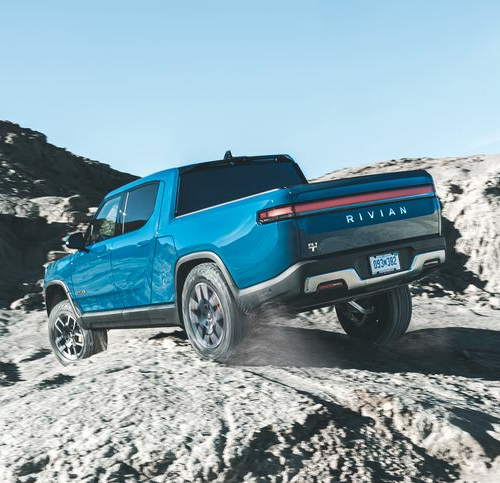BY JOHN VOELCKER | CarAndDriver.Com
Troy Warren for CNT #Cars
An opinion piece suggests you’ll freeze if stuck in an electric car in a blizzard for hours, while gasoline drivers won’t. Like a lot of anti-EV tropes, this one’s not backed up by facts.
The story landed Tuesday afternoon, January 4, just one day after an epic blizzard created a 48-mile jam of vehicles stopped along Interstate 95 in Virginia. The article stemmed from an anecdote tweeted by an unnamed Canadian truck driver who gave blankets to a Tesla driver worried about keeping his kids warm overnight.
That tweet was brought to public attention by an opinion piece in the Washington Post, penned by columnist Charles Lane, with the alarmist headline, “Imagine Virginia’s icy traffic catastrophe—but with only electric vehicles.” It’s a collection of isolated facts and specific assertions designed to make the point that EVs aren’t safe in such conditions. Sadly, the author didn’t support that point with any of the data or analyses showing how EVs actually operate in cold weather.
Lane calls the Tesla driver’s supposed plight “a reality check on the push by government and business to electrify cars and trucks.” He notes batteries lose capacity and charge more slowly in cold weather, and that gasoline cars that run out of gas can be refueled in a matter of minutes.
That’s all true. In a different kind of climate event, however, it’s worth noting gasoline stations can’t pump during power outages—as the East Coast discovered in 2012 after Hurricane Sandy, when power was out for a week or more in some areas. Now, carmakers are starting to tout the ability of future EVs to recharge another EV. You can’t do that with a gasoline car unless you have a gasoline siphon, risking a mouthful of toxic liquid in the process.
Lane’s article should have closed by describing how the Tesla-bound family would have suffered if the kindly trucker hadn’t kept them warm. Surely he showed how quickly their battery depleted, depriving those children of heat?
No such luck. In fact, when you do the math, it turns out EVs may be able to heat their occupants just as long as a car with a combustion engine, depending on your assumptions about the cars, recharging, and refueling.

Looking at Actual Data
The U.S. Department of Energy issued a chart showing the fuel consumption at idle of various gasoline and diesel vehicles. With no accessory loads, both the small gas and diesel engines (each 2.0 liters) consumed at a rate of nearly 0.2 gallon per hour, while a “large sedan” with a 4.6-liter V-8 drank twice as quickly at idle. In our recent test, a Hyundai Sonata with the turbocharged 2.5-liter four-cylinder split the difference and consumed at 0.3 gallon per hour while running the climate control.
If the gasoline car has a 14-gallon fuel tank that started at two-thirds full, or 10.5 gallons, that provides 35 hours of idle time if consuming 0.3 gallon per hour.
As for electric cars, estimates for cabin-heating load vary widely depending on ambient temperature, presence or absence of sun, and other factors.
In November, Reuters fact-checked a widely circulated claim that EVs are more likely to get stuck in traffic from batteries running low. In it, Oxford University researcher Katherine Collett suggested a 2-kW estimate for cabin heating. (Reuters’ verdict: The claim was false.)
A (paywalled) Detroit Free Press article entitled “Vehicle of the Year Honors Prove the Tide Has Irrevocably Turned to Electric Vehicles” quotes Craig Van Batenberg, who trains EV technicians. He has written about heating EV passenger compartments for the global engineering association SAE International. He, too, says heat pumps use “about two kilowatts” to heat a car’s cabin. “With a 60.0-kWh battery,” he said, “I could heat the interior for about 30 hours.”
A July 2020 blog post by TLK Energy, a German digital-modeling firm, calculates higher energy loads for heating an EV. Under two scenarios—a cloudy day at 0 deg C (32 deg F) and a sunny day at -10 deg C (14 deg F)—its estimates of energy use were 3.4 kW and 4.0 kW, respectively.
Our 2019 Tesla Model 3 did better than any of these estimates, consuming energy at a rate of 1.6 kW to maintain 65 degrees inside with an average outside temperature of 15 degrees F. And it’s worth noting our car has the old resistive heating, not the more efficient heat pump that now conditions the cabins of new Model 3s.
Let’s do the math. We’ll assume a 75.0-kWh battery that’s also two-thirds full, just like the gasoline car. Its 50.0 kWh will heat the cabin from 12.5 hours (at 4.0 kW) to 31.25 hours (at 1.6 kW), depending which assumption you use, which, at the high end nearly matches the gasoline car. This also suggests more data is needed to establish the energy used for heating by different EVs under different scenarios.
No Way, Norway!
Back in the Washington Post piece, the closest Lane gets to looking at actual EVs’ operation is to quote a Norwegian Automobile Federation study showing they lose 20 percent of battery range in cold weather. Lane spends a lot of time on Norway, noting the bulk of that nation’s cars are still powered by gasoline and that its government is dialing down subsidies for EV purchases.
Each of those is factually correct. The missing context is that neither indicates a cooling of Norway’s push to end sales of cars with tailpipes by 2025. Au contraire: the first is simply a recognition that Norway’s fleet—like any country’s—will take time to turn over completely. The average vehicle on U.S. roads is 12 years old, so even if every new car sold today were electric, it would take a couple of decades to transform the fleet.
As for lowering incentives, the government has judged its push toward EV adoption a success, to the degree that it can dial them down. Note that 90 percent of new vehicles sold in Norway in December 2021 were fully or partly electric. Hardly a sign of public recognition that EVs aren’t suited to the country’s winters, eh?
That’s okay, since Lane ends by saying Norway isn’t relevant to the U.S. experience anyhow. Most of Oslo’s workers don’t even commute by car—imagine!
Lane is correct in that assertion: Norway is indeed different from the U.S. Far more of that country’s citizens accept climate science than do Americans. Norway’s government implemented a robust plan to cut carbon emissions from virtually all sectors of the country—roughly 10 years ago. That contrasts to the U.S., which is notably unable to do anything of the sort.
Lane ends by saying EVs can “work as well as ICE counterparts in many, or even most, ordinary situations.” But in the extraordinary ones, like 16-hour blizzard traffic jams? “We’re not there yet.” For single-vehicle families in the coldest of climates, there’s arguably some justification for that point of view. Note, though, the average U.S. household now has close to two vehicles (1.9, if you’re counting), and it’s likely to be a long time before both of them will be battery-electric.
Yes, the Tesla Family Was Just Fine
As for that shivering family in the Tesla, it turned out they didn’t run out of heat at all—though the kids may have been comfier in the blankets offered by the trucker.
Two days after Lane’s opinion piece ran, the trucker responded to a question by noting the family stayed warm overnight and had 18 percent of battery capacity remaining the next morning. They were headed to a local Supercharger station to recharge.
Then an actual Tesla driver who was caught in that very same massive 16-hour traffic jam on I-95 weighed in. “I’m grateful that I was driving my EV when I got stuck on I-95,” wrote Model 3 driver Dan Kanninen on the Zero Emission Transportation Association (ZETA) website. He spent 14 hours in his base Model 3, the shortest-range version of that car. He stayed warm (with no engine running, obviously) and was able to stream videos on the car’s 15-inch display.
Kanninen had 50 miles of range left after 14 hours. EV drivers often charge at home, he wrote, so “we are less likely to have just a partial charge, unlike drivers who rarely drive on a full tank.” En route to a Supercharger station, he saw long lines of cars waiting to fuel up.
Other sites have since weighed in to debunk the editorial. No data appears to be available on how many gasoline cars ran out of gas during the 16-hour stoppage.
The moral of the story, one known by those who live in snowy regions: If a blizzard is forecast, bring winter clothes, hand warmers, food, water, a shovel for digging a snow cave, and bear spray—no matter what kind of vehicle you’re driving.
Some research for this story derived from broader discussions of EV topics among the author and the Electric Power Research Institute (EPRI).


































